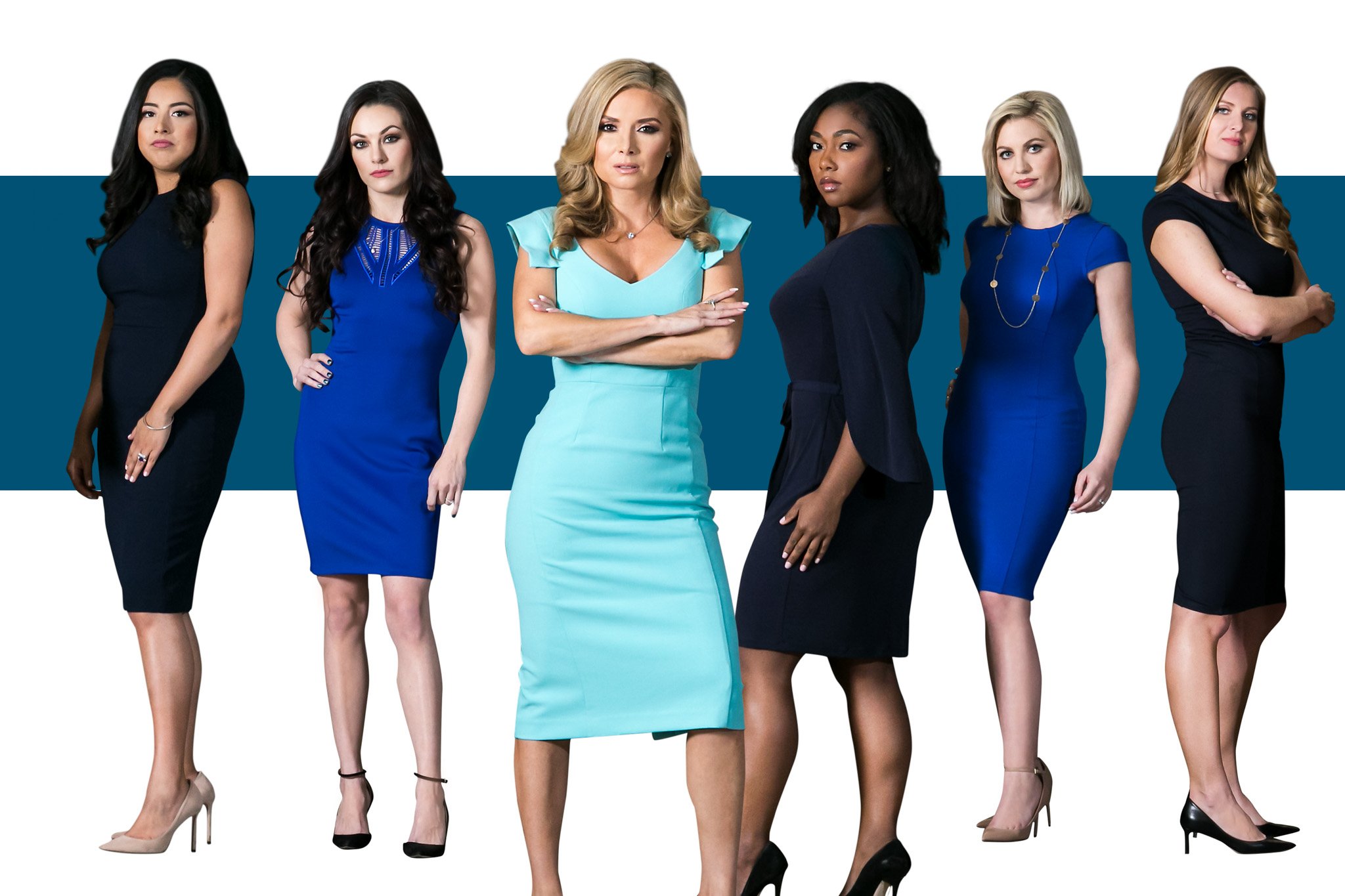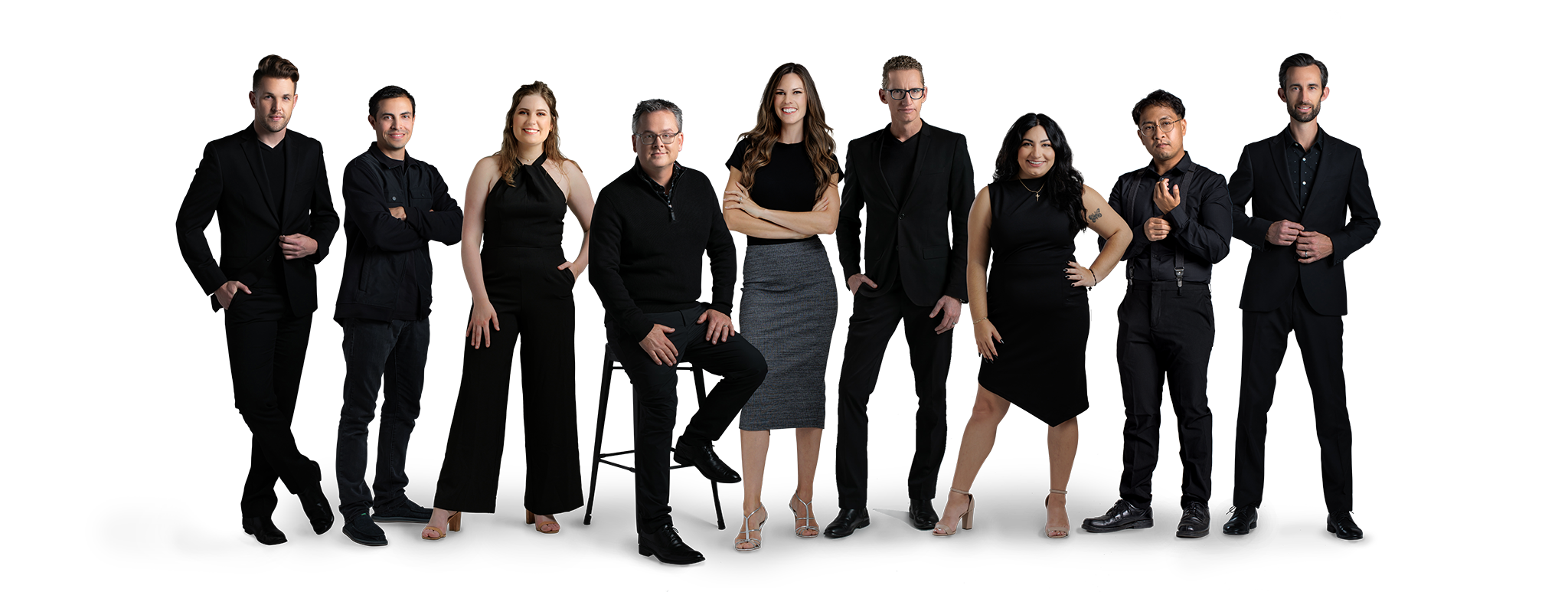The wrong headshot can cost you auditions, as casting agencies only have seconds to review your submission and reject images that don’t fit the role. From budding artists to seasoned actors, our professional headshots have opened doors for careers. Learn the distinctions between commercial vs theatrical headshots to know which type will land the roles you want.
Commercial vs Theatrical Headshots General Overview
Commercial shots help you look marketable to brands, while theatrical shots make you look believable in character-driven stories. Our headshot sessions can attract the right casting directors and roles, giving your career the focused image it deserves.
Overview of Commercial Headshots
Commercial headshots show your friendly, approachable side and help casting directors picture you in ads or brand campaigns. These photos focus on warmth, trust, and connection rather than dramatic intensity.
Pros
- Versatility for non-acting roles, like corporate profiles or branding.
- Projects an easily likable and accessible image for casting directors.
Cons
- May lack the depth and intensity needed for dramatic roles.
- Can sometimes appear too generic or overly polished.
Overview of Theatrical Headshots
Theatrical headshots show your emotional depth and help casting directors see the kinds of roles you can play. These photos focus on expression, tone, and subtle personality rather than broad appeal or friendliness.
Pros
- Communicates emotional range and seriousness for dramatic parts.
- Stands out in a pile of submissions for complex, challenging roles.
Cons
- Less suitable for light, comedic, or commercial casting calls.
- May appear too intense for general business or corporate applications.
Comparing Theatrical and Commercial Headshots
Knowing the difference between commercial and theatrical headshots helps you target the right roles and present yourself clearly to casting directors.
Similarities
Despite their distinct uses, commercial and theatrical headshot photos share some fundamental aspects that benefit actors.
- Technical excellence: Both headshot types require sharp focus, professional lighting, and skilled retouching to present a polished, high-quality image that showcases the actor’s professionalism.
- Current representation: Regardless of style, the headshot must accurately reflect the actor’s current look, including hair and physical build.
- Eye connection: An engaging and direct eye connection is vital in both headshot styles. The images create rapport and communicate the actor’s confidence and presence.
Differences
Commercial and theatrical headshots differ in some aspects, affecting how casting directors see you and what kind of roles they imagine you in.
1. Lighting and Contrast
Lighting changes the mood of a headshot. Commercial headshots typically use brighter, more even, and lower-contrast lighting to create a clean, approachable, and well-lit look. Theatrical headshots employ more dramatic, directional, and higher-contrast lighting to sculpt the face, emphasize mood, and highlight bone structure.

2. Wardrobe and Styling
Your outfit should match the story your headshot tells. Commercial wardrobe tends toward bright, clean, and simple colors or patterns that are generally non-distracting. Theatrical styling allows for more muted, darker, or richer colors and specific textures that help communicate a character type.
3. Expression and Energy
The commercial expression is typically a bright, open, and energetic smile or a very pleasant, optimistic expression that radiates positivity. Theatrical energy focuses on subtle, thoughtful, or intense expressions that suggest emotional depth, vulnerability, and a potential for drama. Regardless of the style, our professional photographers capture genuine emotion, not forced poses.
Major Distinguishing Factor
The intent and the energy conveyed by an actor’s expression and styling are the major differences between a commercial and a theatrical headshot. Commercial headshots sell the personality and likability of the actor for general appeal. Meanwhile, theatrical headshots sell the actor’s capacity for character and emotional complexity.
| Aspect | Commercial | Theatrical |
| Lighting and contrast | Bright, even lighting with minimal shadow | Dramatic lighting with more contrast and shadows |
| Wardrobe and styling | Casual, relatable clothing in bright or neutral colors | More sophisticated or character-specific wardrobe |
| Expression and energy | Warm, inviting smile with high energy | Subtle, nuanced expression with serious or contemplative energy |
When to Use a Commercial Headshot
Use a commercial headshot when you want to appear friendly, trustworthy, and approachable. Casting directors often look for this type of image for roles in advertising, corporate videos, and brand promotions. Typical uses include:
- Auditioning for commercials (fast food, insurance, cars).
- Seeking roles as a friend, neighbor, or busy professional in non-dramatic scenes.
- Submitting to agents for representation in the commercial sector.
When to Use a Theatrical Headshot
Use a theatrical headshot when the role demands emotional depth, intensity, and a more specific, serious character type suitable for complex storytelling. These headshots show emotional depth and help casting directors see your range and character type. Typical uses include:
- Auditioning for dramatic television shows, feature films, or serious stage productions.
- Targeting roles such as a villain, a troubled protagonist, or a character with emotional scars.
- Submitting to agents whose focus is on film, TV, and theater.
Which Type of Headshot Is Better?
A commercial headshot could be better if your primary goal is to secure work in advertising, corporate video, or light comedy, where an easy smile is paramount. Meanwhile, a theatrical headshot is superior when you aim for serious film and television roles that require portraying deep, complex human experiences.
Despite that, the best type of headshot is the one that most accurately reflects your actor type and aligns perfectly with the casting call requirements.
Related Questions
How Frequently Should I Update My Headshot?
The general rule of thumb is to refresh your headshot every one to two years to make sure it accurately represents your current look. However, you must update it immediately if you change your hair color or length, gain or lose a noticeable amount of weight, or experience any major facial changes.
What Should I Prepare for My Headshot Session?
When preparing for a headshot session, bring a selection of clothes that reflect the specific roles you are seeking, paying attention to necklines and textures that will photograph well. To make you look your best and feel confident, we provide in-house professional makeup and styling services as part of your session.
How Can I Choose Which of My Headshots to Use?
The best way to select your final headshots is to have a small, trusted group of industry professionals (agents, managers, or casting directors) give you feedback on a curated gallery. Ultimately, choose the photo that makes you look most authentic, professional, and ready to play the roles you’re auditioning for.
Conclusion
Commercial headshots show warmth and approachability, while theatrical ones display depth and emotion. Each style tells a different story about your range as an actor. Whether you want a specific headshot type or use both for versatility, our headshot photography services will capture headshots that truly represent your range.






